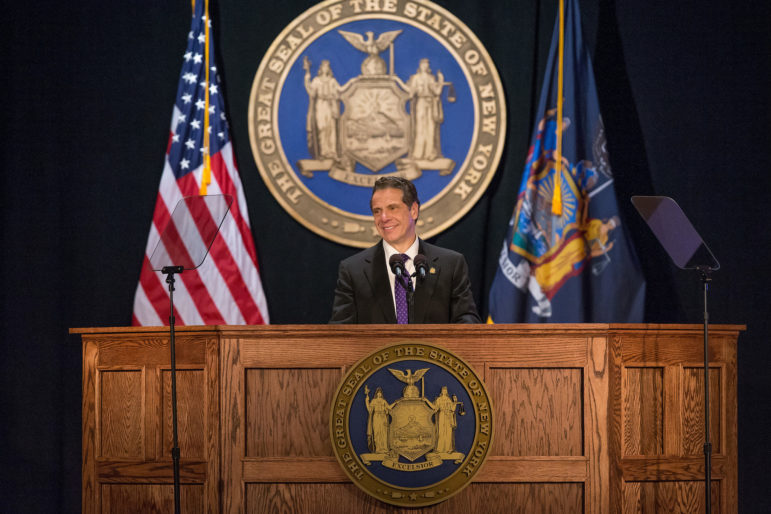
Philip Kamrass- Office of Governor Andrew M. Cuomo
Governor Andrew Cuomo delivers his 2018 State of the State Address at Empire State Plaza Convention Center on January 3.
It was a sunny afternoon in April of 2015, when Governor Cuomo officially accepted the blueprint that would end our state’s AIDS epidemic, making ending AIDS by 2020 a cornerstone goal of his governorship. Public health officials, community based health organizations, and most importantly, people living with HIV, all came to bear witness to the pledge to make New York State the first jurisdiction in the world to end the AIDS epidemic.
The historic moment took place in front of Manhattan’s LGBT Center, where 30 years ago people who were dying from HIV began a fight to save their own lives—because government officials were fatally silent.
Since that day in April, Governor Cuomo has continued to speak in favor of ending AIDS during each of his annual State of the State addresses starting in 2015. But this month at the same address, the Governor’s most-watched political moment of the year, the Governor didn’t mention HIV or AIDS once, and we heard a painful reminder of that silence that has caused the deaths of so many.
Why the silence? The implementation of the Governor’s plan has been making historic progress. Rates of HIV infection today are the lowest ever recorded in the state. We have more and more people living with HIV who are achieving viral suppression, as well as more people who are gaining access to preventative drugs PrEP and PEP, keeping them HIV free.
New York City, the epicenter of the state’s epidemic, is leading the way. According to the city’s Department of Health, HIV infection rates among men who have sex with men (MSM) across all racial and ethnic groups dropped 14.8 percent from 2015 to 2016, after dropping 10.5 percent from 2014 to 2015.
But we still have so far to go. Disparities persist, especially among race, class, and gender. In fact, as reported by NYC’s DOH, new HIV diagnoses increased among women by 5.2 percent from 2015 to 2016. Disparities are particularly severe in this group: 90 percent of newly diagnosed women are Black or Latina, and 52 percent are 40 years of age or older. And outside of New York City, 3,000 New Yorkers living with HIV are struggling to pay their rent while fighting for treatment and services to survive.
Our state has been fighting this epidemic for over 30 years, and we have lost well over 120,000 lives in that time. There are still 112,000 New Yorkers, I included, who are fighting to live with the virus.
We are not done here. On January 22, hundreds of New Yorkers from all corners of the state, along with the organizations that support them, will go to Albany to rally and speak directly to lawmakers about what we need: stable and sustainable housing, care coordination, access to syringes and treatment, and a state that respects low-income people and values their health. We will be loud in the face of silence, and we invite Governor Cuomo to use his voice to join us once again.
Jason Walker is VOCAL-NY’s HIV/AIDS campaign coordinator.








